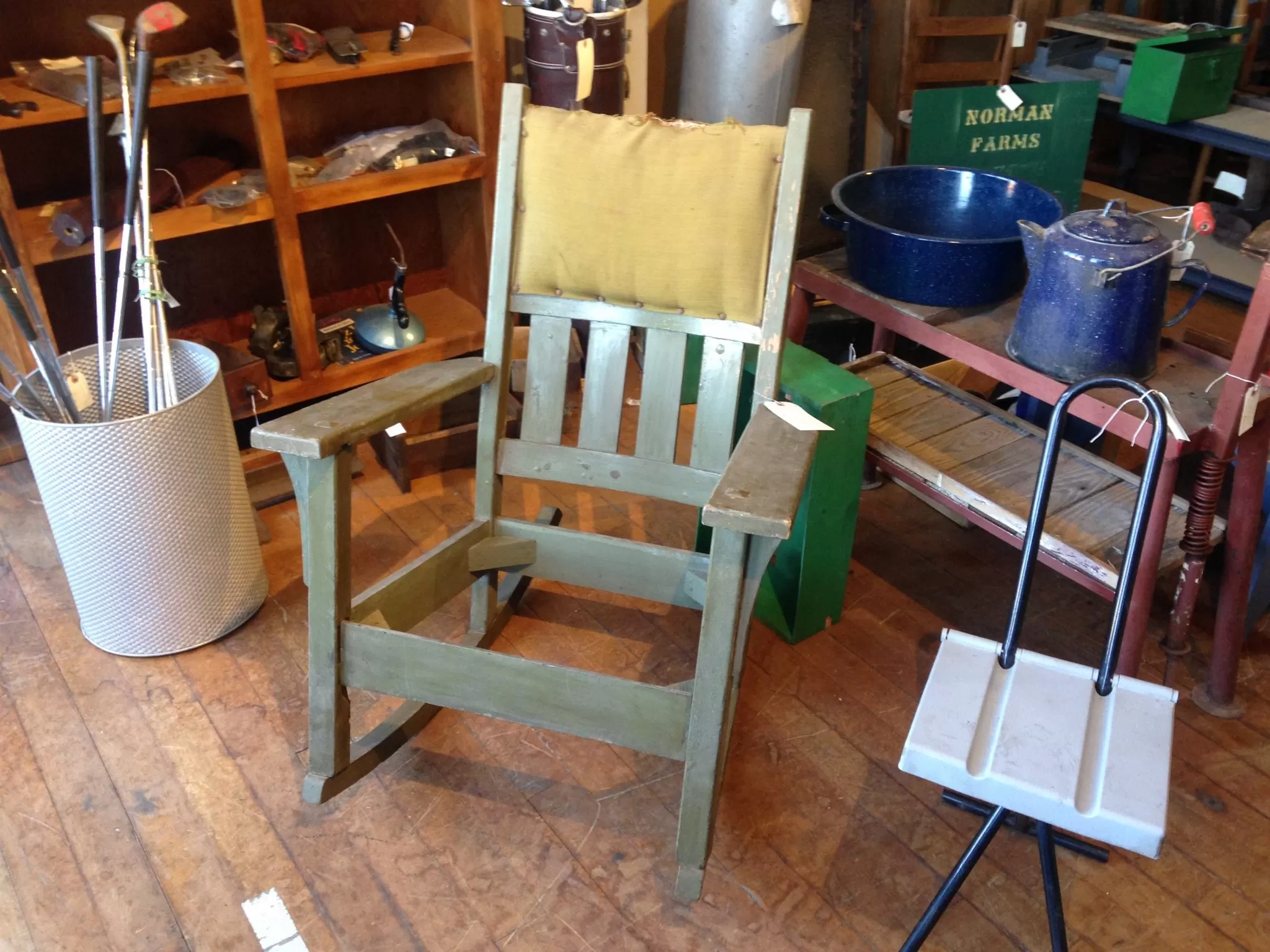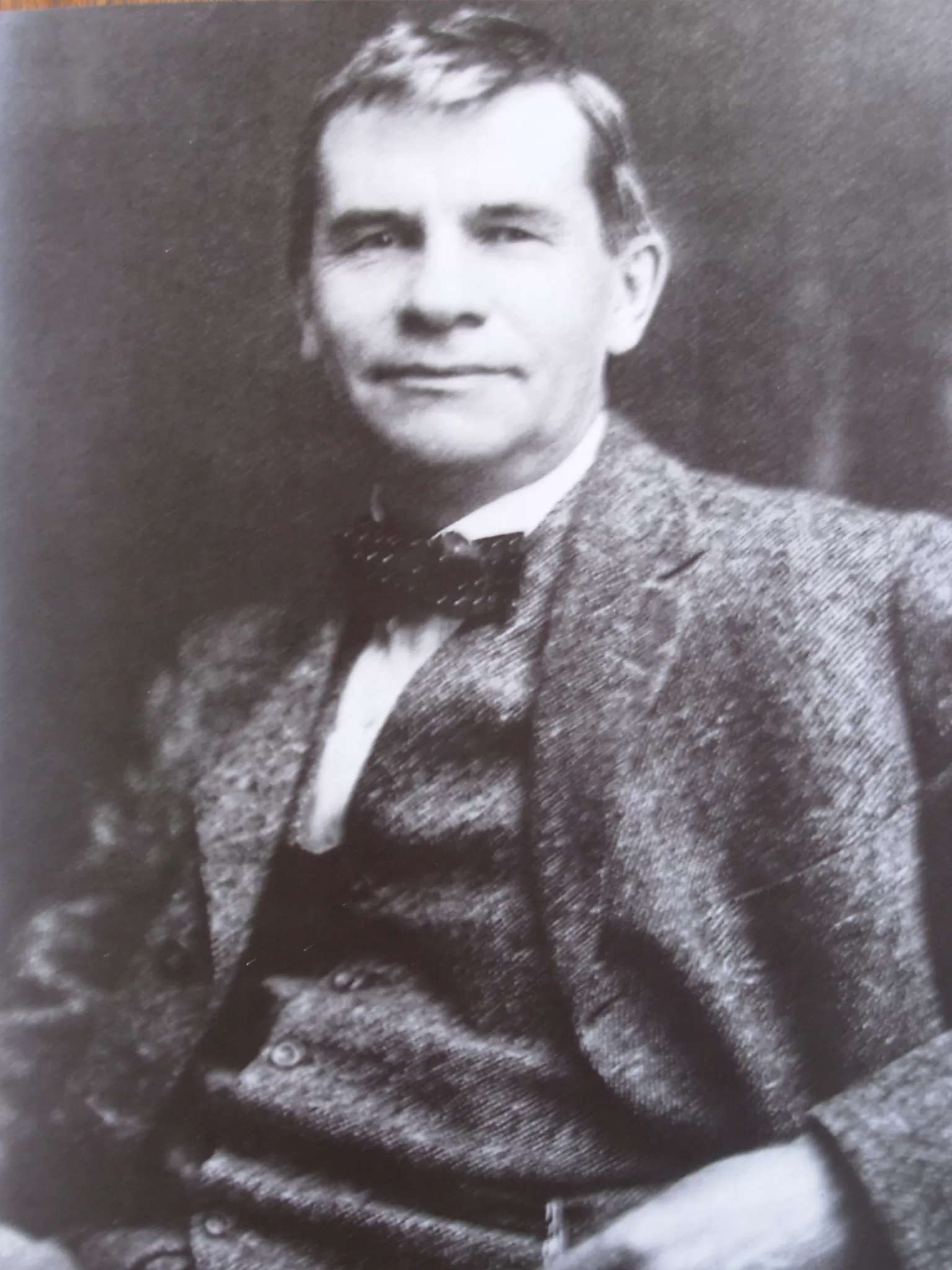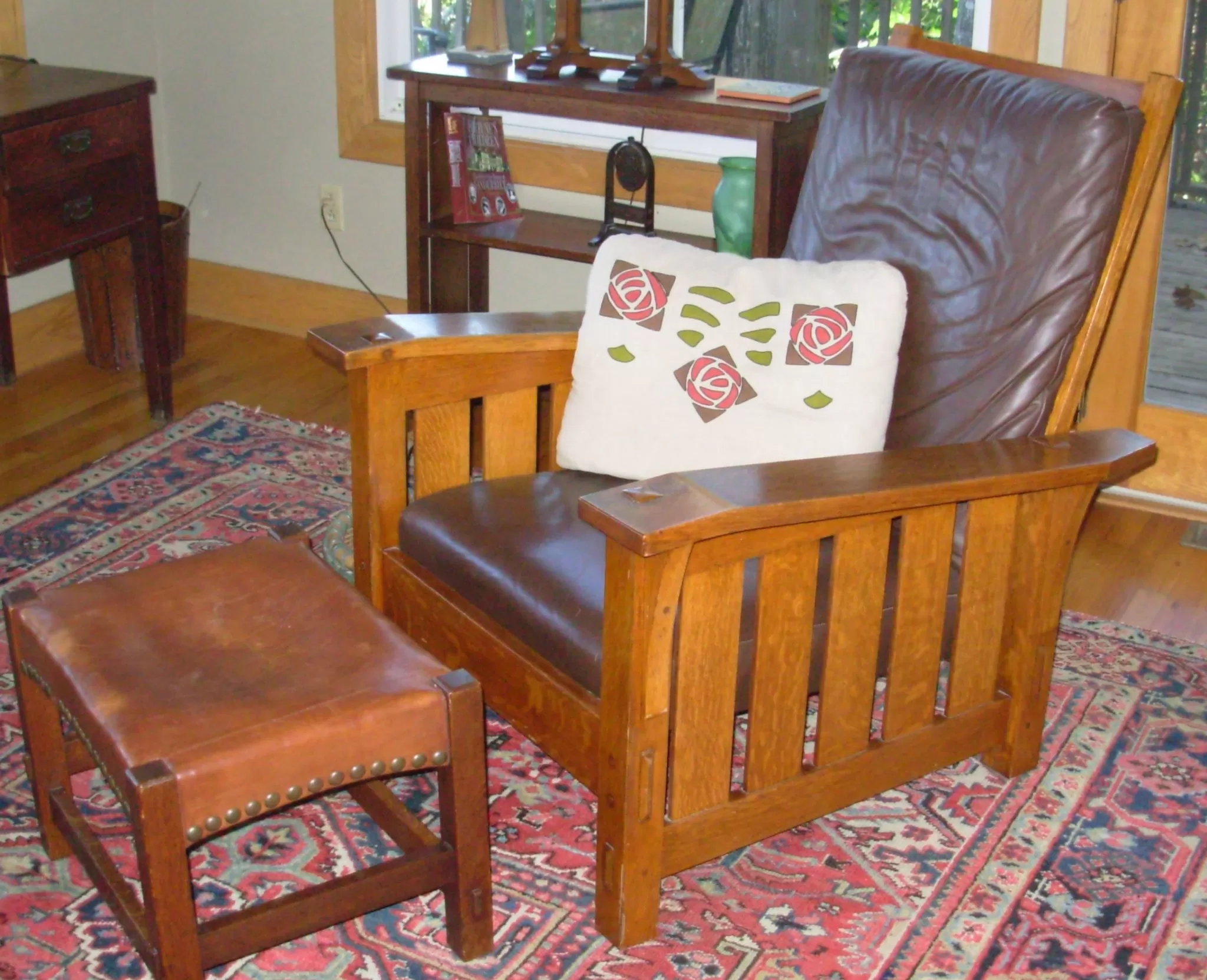A Man On a Mission
The woman’s voice caught me off-guard, coming from behind me as I crouched on my hands and knees peering up into the underside of an oak Arts and Crafts rocking chair.
“You look like a man on a mission.”
At first I thought it was a feeble attempt at a stale joke, given what I was doing, but as it turns out she didn’t get the connection.

At it was, the rocker could well have been called “mission oak,” if we still consider that term to describe the lower-quality knock-offs that permeated the Arts and Crafts market as early as 1901. A frustrated and rarely modest Gustav Stickley complained about it in his catalog introductions, once declaring:
“The popularity achieved by Craftsman furniture was the signal to an army of imitators who saw in it what they considered a novelty that would prove to be a notable money-maker. Failing to comprehend my reasons for giving to Craftsman furniture forms that were plain and almost primitive, they naturally seized upon this primitiveness as a fad which might be profitable, and exaggerated it into intentional crudeness.
“This imitation has grown instead of decreased with the passing of time, and while in one sense it is the best evidence of the popularity and the stability of the Craftsman style, in another it creates confusion which at times is annoying.

“To add to the confusion, some of the most persistent of these imitators bear the same name as myself, and what is called ‘Stickley furniture’ is frequently, through misrepresentation on the part of salesmen and others, sold as ‘Craftsman furniture – or just the same thing.’”
Ouch.
Wonder how that went over at the next Stickley family reunion?
“Pass the stuffing, will you, Leopold?”
“Sure, Gus….”
Gustav Stickley was a man on a mission, a man sometimes blinded by his conviction that eventually everyone would recognize the significance and the desirability of Craftsman furniture. (He naively expected the term ‘Craftsman furniture’ would replace ‘Arts and Crafts furniture.’) Like the captain on a ship headed into a perfect storm, he rode it all the way down to the bottom of a financial sea, even while family members were urging him to jump ship.
Even after his bankruptcy, brothers Leopold and Albert extended a hand to their older brother. In 1918 they even set up a new corporation with a conjoined shopmark, making lighter versions of his once-famed Craftsman furniture.
But like the brothers’ earlier attempt to work together as young men in their first furniture shop, this, too, was short-lived.

Though he died penniless and dependent on his family, Gustav Stickley might today know that his 1912 prediction for Craftsman furniture has come true, “that in fifty or a hundred years it will be worth many times its first cost.”
– Bruce Johnson
